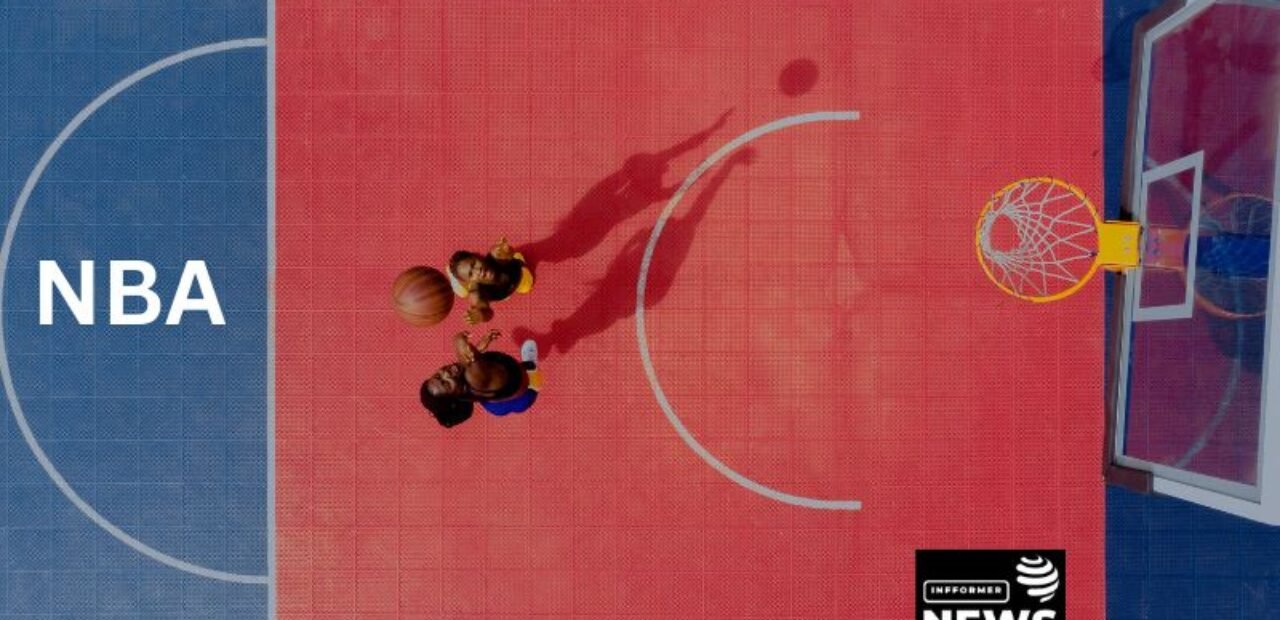NBA: A Comprehensive Look at the National Basketball Association
by Admin · September 17, 2024
Table of Contents
ToggleThe History of the NBA
The NBA was originally established as the Basketball Association of America (BAA) in 1946. Three years later, it merged with its rival, the National Basketball League (NBL), to form what we now know as the NBA. At that time, the league only had 17 teams, most of which were based in large cities like New York, Boston, and Philadelphia. Over the years, the NBA expanded its reach, adding more teams and gaining popularity both domestically and globally.
The NBA’s history is filled with iconic moments that have shaped the game into what it is today. From the early dominance of the Boston Celtics in the 1960s to the rivalry between Magic Johnson and Larry Bird in the 1980s, the league has produced some of the most memorable players and games in sports history. The NBA saw a surge in popularity in the 1990s, thanks in large part to Michael Jordan, whose success with the Chicago Bulls made him a global icon and helped catapult the NBA to international fame.
The Structure of the NBA
The NBA currently consists of 30 teams, divided into two conferences: the Eastern Conference and the Western Conference. Each conference is further divided into three divisions, with five teams in each division. The teams play an 82-game regular season, followed by the playoffs, where the top eight teams from each conference compete for the NBA Championship.
At the top of the NBA hierarchy is the commissioner, who oversees the league’s operations, ensures fair play, and handles business affairs. Adam Silver has served as the NBA’s commissioner since 2014, following in the footsteps of David Stern, who played a pivotal role in the league’s global expansion. The NBA also has an executive board, which consists of team owners and representatives who make key decisions regarding the league’s rules and regulations.
One of the most exciting parts of the NBA season is the playoffs, where teams face off in a series of games to determine who will advance to the next round. The NBA Finals, held annually in June, is the culmination of the season, where the two conference champions compete for the championship trophy. The NBA Finals have produced some of the most iconic moments in sports history, including buzzer-beaters, historic comebacks, and unforgettable performances.
The Global Impact of the NBA
One of the most remarkable aspects of the NBA is its global reach. While it began as a domestic league, the NBA has successfully expanded its brand to an international audience. This growth can be attributed to several factors, including the league’s television deals, international player participation, and social media presence.
The NBA has held international games in countries such as China, Mexico, and the United Kingdom, allowing fans around the world to experience live NBA action. These games not only provide entertainment but also serve as a marketing tool, helping to promote the league globally. Additionally, the rise of international players such as Dirk Nowitzki, Yao Ming, and Luka Dončić has further increased the NBA’s global appeal. Today, nearly a quarter of the league’s players are born outside of the United States, highlighting the NBA’s international diversity.
The NBA’s influence extends far beyond the basketball court. It has become a major player in the world of fashion, with many athletes launching their own clothing lines or collaborating with major brands. The league has also embraced social media, with players using platforms like Twitter, Instagram, and TikTok to engage with fans and build their personal brands. This digital presence has helped the NBA become one of the most followed sports leagues in the world, with millions of fans tuning in to watch games, follow their favorite players, and engage with NBA content.
The NBA and Social Issues
The NBA has long been a platform for social activism, with players using their status to speak out on important issues. In recent years, the league has taken a more active role in addressing social justice, racial inequality, and political issues. Players such as LeBron James, Chris Paul, and Stephen Curry have been vocal about their views on topics such as police brutality, voting rights, and education reform. The NBA itself has launched initiatives to promote social justice, including the establishment of the NBA Foundation, which focuses on creating economic opportunities for Black communities in the United States.
During the 2020 season, the NBA made headlines for its support of the Black Lives Matter movement. In the wake of the deaths of George Floyd, Breonna Taylor, and others, NBA players used their platform to bring attention to systemic racism and police violence. The league allowed players to wear social justice messages on their jerseys and painted “Black Lives Matter” on the courts in the Orlando bubble, where the season was resumed during the COVID-19 pandemic.
The NBA has also been a leader in addressing gender equality. While the NBA is a male-dominated league, it has supported the growth of women’s basketball through its partnership with the Women’s National Basketball Association (WNBA). Many NBA players have publicly supported the WNBA, attending games, promoting the league on social media, and advocating for equal pay for women athletes.
The Role of Technology in the NBA
The NBA has always been at the forefront of using technology to enhance the fan experience and improve player performance. One of the most significant technological innovations in recent years is the use of advanced analytics to track player movements, shooting percentages, and other statistics. Teams now use this data to make more informed decisions about game strategy, player health, and performance optimization.
The NBA has also embraced virtual reality (VR) and augmented reality (AR) to provide fans with new ways to experience the game. Through VR, fans can watch live games as if they were sitting courtside, while AR allows them to interact with players and teams in real-time. These technological advancements have helped the NBA attract a younger, tech-savvy audience and stay ahead of the curve in the competitive sports entertainment industry.
In addition to VR and AR, the NBA has embraced the use of blockchain technology and non-fungible tokens (NFTs). NBA Top Shot, a digital collectible platform, allows fans to buy, sell, and trade official NBA highlights and moments. This innovation has opened up a new revenue stream for the league and has attracted a new generation of collectors who are interested in digital assets.
Conclusion
The NBA is more than just a basketball league; it is a global brand that has influenced sports, culture, and society in profound ways. From its humble beginnings in 1946 to its current status as a multi-billion-dollar industry, the NBA has grown into a cultural powerhouse that transcends borders. Its impact can be seen in the way it has embraced international players, addressed social issues, and used technology to innovate the fan experience. Whether you’re a die-hard basketball fan or someone who casually follows the sport, there is no denying the NBA’s significance in the world of sports and beyond. As the league continues to evolve, it will undoubtedly play a crucial role in shaping the future of basketball and global entertainment.
Read also: check
Tags: NBA





























































